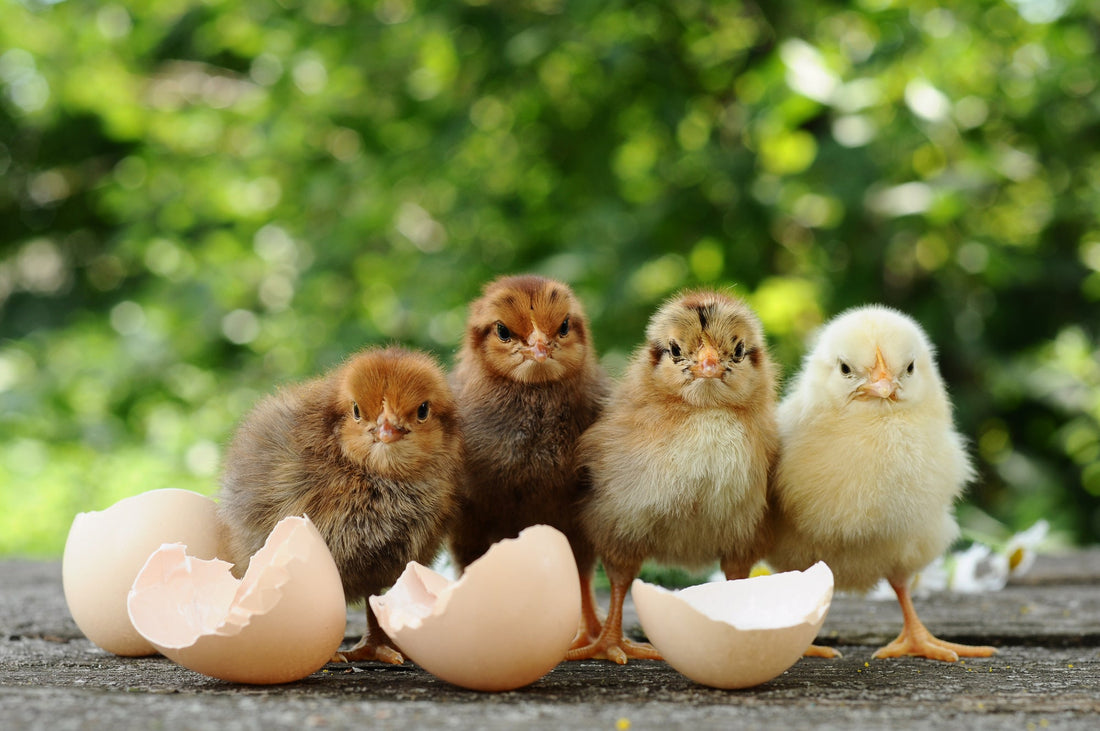Greetings, fellow poultry pals! If you're reading this, you're likely considering taking the plunge into the wonderful world of chicken keeping, starting with the adorable, fluffy phenomenon known as baby chicks. Or maybe you've already brought home a box of chirping cuteness and are eager to learn how to raise them into happy, healthy adult chickens. Either way, you've come to the right place! In this comprehensive guide, we'll cover everything you need to know about raising baby chicks, from setting up the perfect brooder to transitioning your little ones to the great outdoors. So, let's get crackin'!
Part 1: Preparing for Your Baby Chicks' Arrival
Before your baby chicks arrive, it's essential to have everything set up and ready to go. Here are the key components you'll need to create a cozy, safe environment for your new feathered family members:
The Brooder: The brooder is the chicks' first home, serving as a warm, secure space where they can grow and develop. You can use a variety of containers for your brooder, such as a large plastic storage tub, a kiddie pool, or a wooden box. Just make sure it's sturdy, easy to clean, and provides at least 2 square feet of space per chick.
Heat Source: Baby chicks need supplemental heat to keep them warm and comfortable. You can use a heat lamp with a red or infrared bulb, a radiant heat panel, or a specialized chick heating plate. Whichever option you choose, be sure to monitor the temperature closely, maintaining a range of 95-100°F for the first week, and reducing the temperature by 5°F per week until the chicks are fully feathered.
Bedding: A layer of absorbent bedding, such as pine shavings or chopped straw, will help to keep the brooder clean and dry. Avoid using cedar shavings or newspaper, as these materials can cause respiratory issues and slippery surfaces, respectively.
Feed and Water: Baby chicks need access to fresh water and a specially formulated chick starter feed at all times. You can use chick-specific feeders and waterers or shallow dishes, but be sure to clean and refill them regularly to prevent contamination and spills.
Perches and Enrichment: As your chicks grow, they'll appreciate having a few low perches to hop onto and practice their roosting skills. You can also offer simple toys, like a small mirror or a head of lettuce, to keep them entertained and stimulated.
Part 2: Caring for Your Baby Chicks
Once you've got the brooder all set up and your baby chicks have arrived, it's time to dive into the day-to-day care of your fluffy flock. Here's what you'll need to know to keep your chicks healthy, happy, and thriving:
Monitoring Health: Regularly observe your chicks for signs of good health, such as bright eyes, clean feathers, and active, curious behavior. Be on the lookout for any signs of illness or distress, such as lethargy, sneezing, wheezing, or pasty vents (a buildup of droppings around the chick's rear end). If you notice any concerning symptoms, consult a veterinarian or experienced chicken keeper for advice.
Maintaining the Brooder: Keep the brooder clean and dry by removing soiled bedding and replacing it with fresh material as needed. This will help to prevent the growth of harmful bacteria and the development of respiratory issues.
Handling and Socialization: Gently handling your baby chicks daily will help them to become accustomed to human contact and develop a trusting relationship with you. Use slow, gentle movements, and always support their bodies when picking them up. Regular interaction will result in friendlier, more social adult chickens that are a joy to have in your backyard flock.
Gradual Introduction to Treats: As your chicks grow, you can begin to introduce small amounts of healthy treats, such as mealworms, chopped fruits, and leafy greens. Be sure to offer these treats in moderation and always provide grit (finely crushed stone or sand) to aid in digestion.
Part 3: Transitioning Your Chicks to the Great Outdoors
As your baby chicks grow, develop feathers, and become more active, it will soon be time to transition them to their outdoor coop and run. Here are some tips to ensure a smooth and successful move:
Timing: Generally, chicks are ready to move outdoors when they are fully feathered and able to maintain their body temperature without supplemental heat. This usually occurs around 6-8 weeks of age but can vary depending on the breed and weather conditions.
Weather Considerations: Whenever possible, plan to move your chicks outdoors during a period of mild, stable weather. Extreme heat, cold, or rain can be stressful for young birds and make the transition more challenging.
Acclimation: Before moving your chicks to their new outdoor home, give them some time to acclimate to the new environment. Start by bringing them outside for short, supervised periods during the warmest part of the day, gradually increasing the duration of these outings as the chicks become more comfortable.
The Big Move: When the time comes to move your chicks into their outdoor coop and run, do so during daylight hours to allow them plenty of time to explore and settle into their new surroundings. Ensure that the coop is secure, well-ventilated, and equipped with appropriate roosting bars, nesting boxes, and feeders.
Predator Protection: Ensure that your outdoor coop and run are well-protected from predators, such as raccoons, foxes, and birds of prey. Use sturdy hardware cloth or welded wire for the run's fencing, bury the fencing at least 12 inches into the ground to deter digging predators, and secure all doors and windows with predator-proof latches.
Integration with an Existing Flock: If you're adding your new chicks to an existing flock, take care to introduce them gradually to minimize stress and aggression. Start by allowing the two groups to see and interact with each other through a barrier, such as a wire fence or mesh screen. After a week or two, you can begin supervised mingling sessions, gradually increasing their time together until they're fully integrated.
Congratulations! You've successfully raised your baby chicks into healthy, happy chickens that are ready to explore the great outdoors and enjoy the perks of their new coop and run. As you continue on this exciting chicken-keeping journey, remember that the key to a thriving, harmonious flock is consistent care, attention, and love. So, be sure to spend time with your feathered friends, stay attuned to their needs, and enjoy the many rewards that come from sharing your life with these delightful creatures.
Happy chick raising, friends! May your days be filled with fluffy, feathered joy and the sweet sound of contented clucks.

